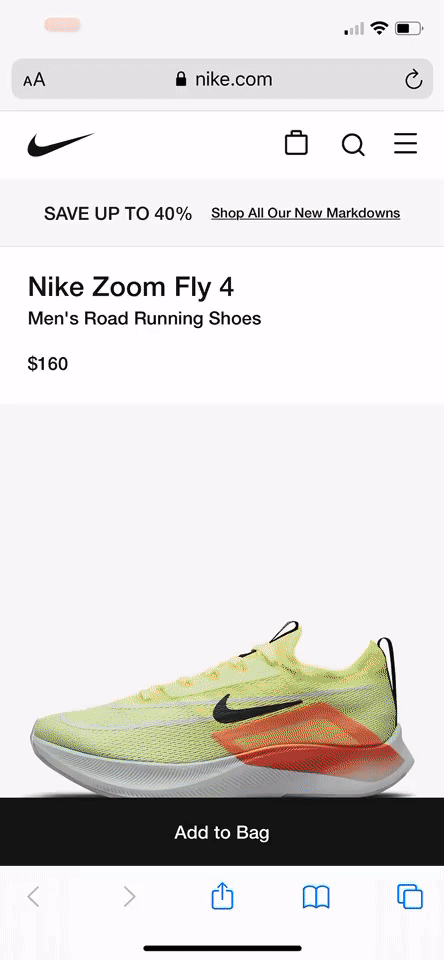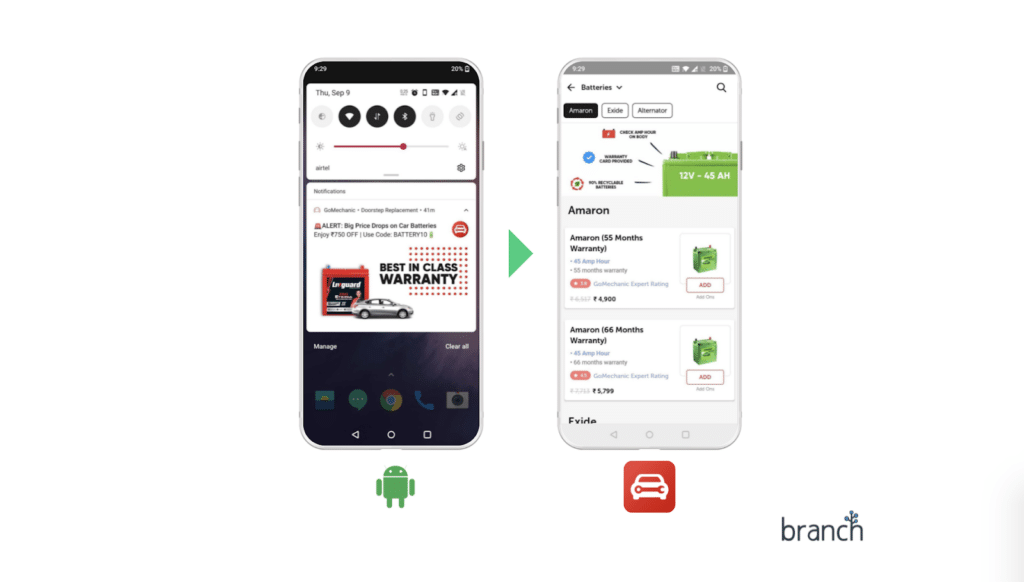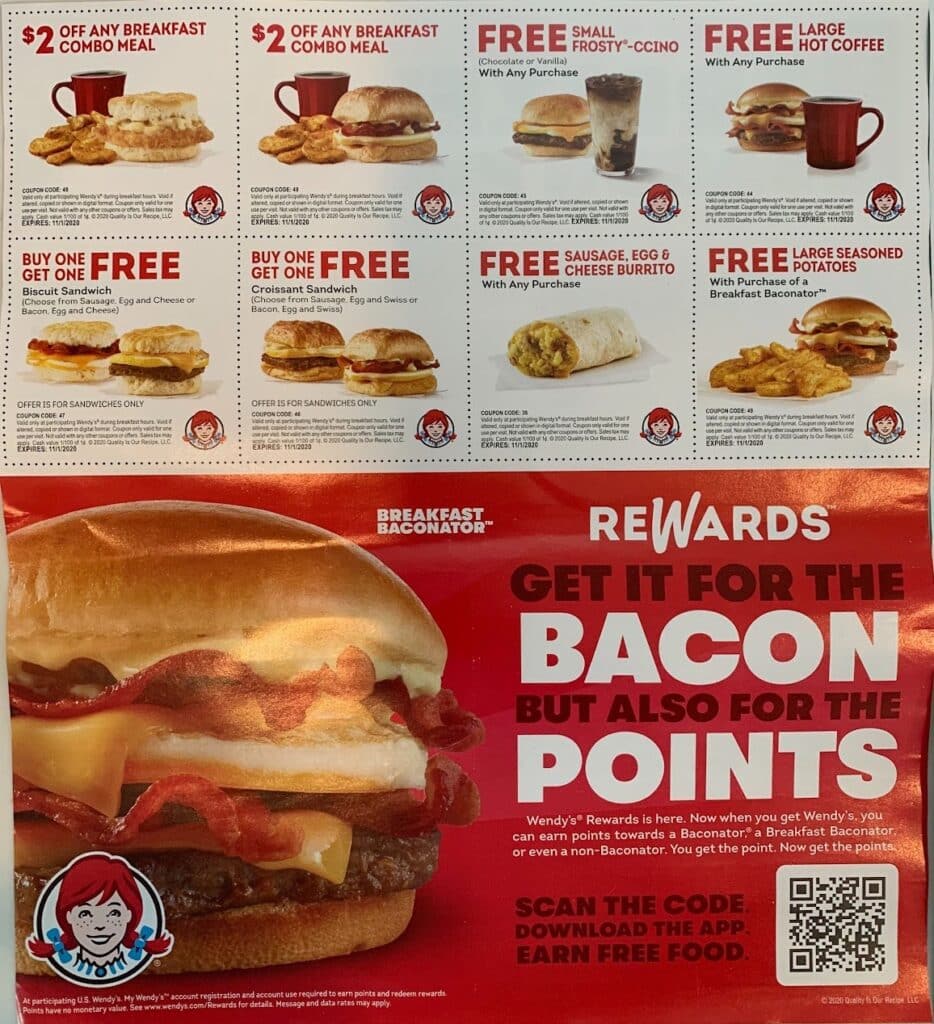As a mobile marketer, I’m sure you’ve experimented with a plethora of great and unique ways to curate your users’ mobile experiences. But what if I told you your current tactics have you missing out on valuable engagement? And, even better, what if we here at Branch had proven strategies that could help you hit your year’s target KPIs with just a little well-placed effort?
Instead of detailing mobile UX best practices straight on, let’s work backward. Here’s a breakdown of key items you should consider avoiding when constructing your mobile user experience:
- Sending your users to a generic landing page
- Skipping out on an onboarding process
- Isolating your marketing channels and losing out on attribution
- Ignoring the power of push notifications
- Withholding incentives
- Incorporating irrelevant or disruptive ads
- Using generic desktop formats for your mobile web experiences
We’ll discuss these commonly overlooked opportunities and explore ways to optimize each one so you can provide the best mobile experiences.
1. Avoid sending your users to a generic landing page
If your user views your product or service on mobile web (mWeb) and taps your call-to-action (CTA) button, make sure you capitalize on that momentum and send them directly to the specific content they expect to see like Philips did with deep links. Imagine you’re checking out a pair of size 14, green Nike Zoom Fly 4s. Instead of being routed to the checkout page when you tap the image, you’re sent to the Nike app home page. You’ll likely lose interest with every additional tap it takes to get you to that checkout page.
By sending high-intent users directly to their ideal destination, you’re removing friction from their purchasing process and leading to their increased lifetime value (LTV).
Nike uses a comprehensive onboarding flow for new app users to immediately tailor the way they experience the app.
2. Avoid skipping an onboarding process
Are you dropping your freshly signed-up users into your app with no direction? Doing so misses out on a huge opportunity for personalized custom onboarding to get your users to engage with your platform in the most effective way possible.
Use quick and simple prompts (like 8tracks) to tailor the initial app experience. Whether users are interested in learning about a certain product or want to be the first to receive your email newsletters, you can gather valuable feedback right from the source and customize their UX across all of the ways they interact with your content.
If you’re already utilizing an onboarding flow — great! Level up your user engagement even more by developing custom logic based on how your user got into the app. You can send users who come from marketing emails directly into your product menu. Or, for social users, you can send them straight into a referral page. Leverage the source of your user’s first engagement to give them an even more relevant experience.
3. Avoid isolating your marketing channels and losing out on attribution
Users aren’t only accessing your content from their desktop browser anymore. Folks are consuming content from OTT channels, tablets, watches, even cars. And that’s just scratching the surface! Use this mass consumption of media to your advantage and invest in cross-channel experiences that work symbiotically.
Consider sending your offline users to your app via a tactfully-placed QR code on a printed receipt to enhance the in-store shopping experience. By doing this, you can attribute any downstream actions they take within the app back to their initial QR code scan. This, then, gives you insight into users’ unique journeys and their preferred way of engaging with your app. Or, if you’d rather send them to the mWeb first, you can later convert those users into high-value app users. Just make sure you first communicate value by placing a Branch Journeys banner on your mobile website with a CTA to download the app like Sears & Kmart did.
Whether users come to you via email, ads, or any other channel you invest in, Branch’s linking and attribution functionality can support it. Compare your various channels’ performance data to identify which campaigns resonate the most with your customers. You can also utilize this data to identify where to invest your future marketing efforts and streamline channels where the cost outweighs the value.
4. Avoid ignoring the power of push notifications
Let’s say you’ve already won over a group of users via app downloads. What happens after that first install? Without re-engagement, you may end up with a set of users who don’t use it and end up losing it. The solution? Enter: Push notifications!
A gentle reminder can be sent to the user to prompt an action and encourage app engagement. Let your users know if there are new products, events, interesting updates, timely shipping or travel notifications, or new content related to their previous behavior. Any one of these can be used to guide your customer into becoming that coveted active user.
GoMechanic used this personalized tactic by sending a notification to those who were overdue for a car maintenance check-up. By tailoring the push content to an actionable, relevant CTA, GoMechanic was able to see a 15% increase in conversions.
GoMechanic uses predictive analytics to send a push notification for Battery sales to a customer with high-intent to purchase. The notification sends the user directly into the battery purchase page for a seamless experience.
5. Avoid withholding incentives
For this one, let’s journey back to 2016 when Candy Crush took over the world and had us (mainly our parents) absolutely hooked. Gaming companies have mastered the art of re-engaging users with regular incentives. Check in daily and you can receive extra coins, gems, and goodies that cost little to nothing to the app company yet motivate users to frequently engage with the app. We can take a page from these gaming companies and encourage our users to claim their reward in exchange for app engagement. This encouragement could be delivered via email, push, or any preferred channel.
Some example messages include:
New users: Download the app and claim a free burger!
Existing users: Log in to see your code for 20% off your next purchase.
User referrals: Send your code to a friend to both receive $10 in savings.
Wendy’s incentivizes users to download their app by rewarding points towards free food.
6. Avoid incorporating irrelevant or disruptive ads
On the flip side, another aspect apps have in common are the seemingly random and disruptive ads. Too long, invasive, or irrelevant? You bet your user’s attention is being pulled away from a given app’s conversion or product purchase to get away from that ad as soon as possible. If a user’s ad or shopping preferences are available, use those to your advantage and surface information that is curated for them. Plan for non-invasive or strategically-placed ads to ensure high-value flows aren’t disrupted. Leverage downstream events to make informed decisions on your ad placements and assess how your users are engaging with your app.
7. Avoid using generic desktop formats for your mobile web experiences
Make your user’s first impression count by optimizing your company website to fit on mobile devices. It’s critical to make your site functional and intuitive regardless of how your user chooses to access it. Make navigation simple and clear. And always offer the option to visit or download the app for an even more seamless experience. App store buttons are an easy and functional way to send your user from your website to your app.
Apple app store and Google play store official buttons for redirecting users to their desired OS app. Source: Pinterest.
In a world with limitless mobile marketing strategies yet limited campaign budgets, tactical user experiences can be the make-or-break difference between exceeding your yearly goals or underperforming. By focusing on user-centric, personalized and relevant campaign techniques, you can increase your customers’ engagement and your campaign’s performance metrics with a few tweaks to your existing strategy.
Branch provides the industry’s leading mobile linking and measurement platforms, offering solutions that unify user experience and attribution across devices and channels. Branch has been selected by over 100,000 apps since 2014 including Adobe, BuzzFeed, Yelp, and many more, improving experiences for more than 3 billion monthly users across the globe. Learn more about Branch or contact sales today.


























